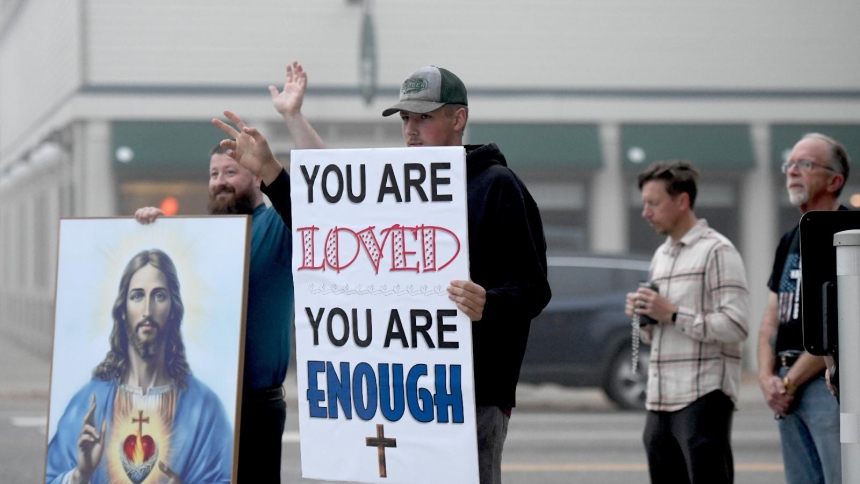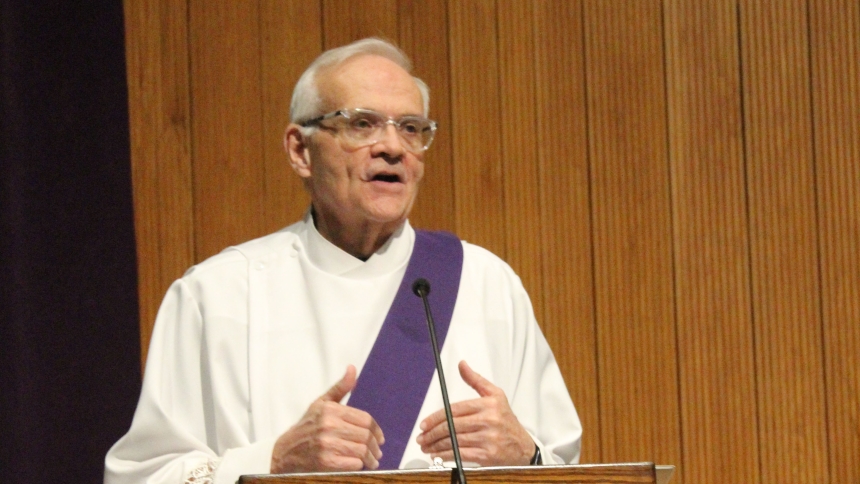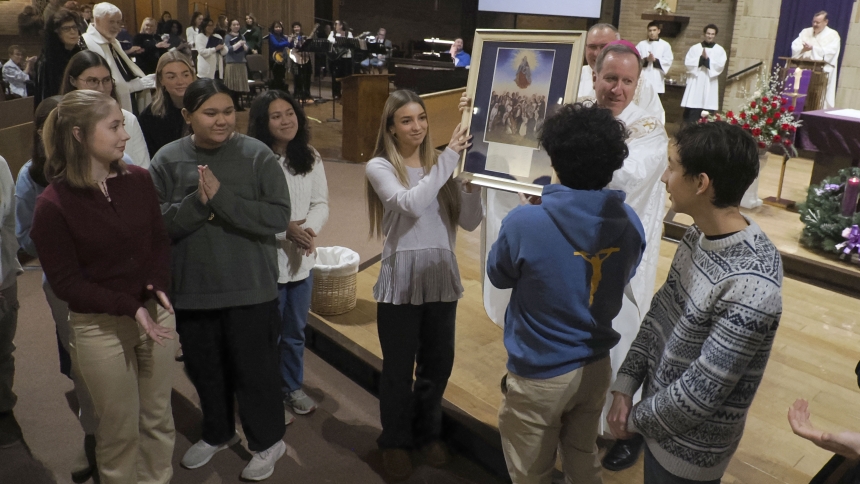
As published in the Northwest Indiana Catholic on February 5, 2017
February 11 is the World Day of Prayer for the Sick, named as such because it is the feast of Our Lady of Lourdes. The spiritual focus of Mary’s apparitions in this remote French village was healing, beginning with a blind man regaining his sight. Millions of suffering and ill pilgrims annually make the journey to Lourdes, bathing in the waters, praying to Our Lady, seeking healing and strength.
While most do not receive a miraculous recovery, many pilgrims point to a renewal of peace, grace and joy that allows them to embrace their illness as an extension of Christ’s salvific sufferings.
A significant portion of Jesus’ earthly ministry was healing the sick - the blind, paralytics, the leprous, persons suffering seizures and the deaf and mute. All came to Christ, seeking his divine power to save them from terrible afflictions and distress. Jesus proclaimed the Kingdom of God in his words, but he acted out the fruitfulness of that heavenly reign through his healings.
Suffering, illness, psychological and physical ailments and sin are all connected to human limitation, a sign of the disintegration of the person and linked to the dark mystery of death. Anyone who has struggled with cancer feels that their body has betrayed them or even turned against them. Only God can make us whole; Jesus was intent on restoring that integration of mind, body, heart and soul in each person. A healed and restored person is what salvation looks like.
When we suffer, it often feels like punishment. Why are you doing this to me, God? What did I do to deserve this? Where are you? Why don’t you answer my prayers?
These questions haunt our minds and become our gut-wrenching prayer to the Lord in moments of intense darkness. In the midst of such difficulty, we feel like God has let us down. Suffering can easily seem to snuff out faith.
As Christians, however, we believe that God suffers with us in the Passion and crucifixion of Jesus Christ. God did not send us some philosophical treatise, explaining the meaning of suffering; he sent us his Son to accompany us through the shadow of death as we move towards the eternal Dawn from on High.
Traditionally, Catholics venerate the crucifix, a cross with Jesus’ body hanging on it, not because we do not believe in the primacy of the Resurrection, but because Jesus still suffers in the broken body of humanity, as he identifies with every person who faces afflictions, hatred, abuse, persecution and illness. Many sick people have witnessed to me how their prayer before a crucifix, or even an occasional loving look at a crucifix hanging on the wall gives them the strength and courage to go on.
Mysteriously, on the cross, Jesus moves from the one offering mercy and healing to become the one who is in need of compassion himself. His radical identification with our poverty and darkness inspires us to offer our brokenness to him and to touch the wounds of our brothers and sisters with love, confident that we are serving Jesus himself.
In his letter to the Colossians, St. Paul writes, “Now I rejoice in my sufferings for your sake, and in my flesh I am filling up what is lacking in the afflictions of Christ on behalf of his body which is the Church.”
This mysterious passage raises some theological questions: how can the afflictions of Christ be incomplete? How does my suffering connect with that of Jesus or help out the Church in any meaningful way?
In my limited opinion, Paul concluded that Christ mercifully allows us to add our experiences of pain, suffering, loss and limitation to the vast mystery of his love and redemption so that we can share in the salvation of the world precisely through our weakness. Affliction, thus spiritually embraced, can become a source of love and hope for others. The cross imbues our dark experiences of sin, pain and death with the radiant light of the risen Christ.
If I can find some transcendent meaning and purpose in suffering, it may not take away the pain or difficulty of it, but at least I can find hope in the midst of it.
Health care has always been an integral part of the mission of the Church because it lies at the center of Jesus’ ministry. Over the centuries, monasteries and convents formed the first hospitals, places of “hospitality” where the sick and suffering found solace and healing under the gentle care of monks and nuns. Saints Camillus de Lellis, Louise de Marillac, John of God, Teresa of Calcutta, Francis of Assisi and Elizabeth of Hungary are a few of the many saints who found their path to God by loving and serving the sick. The high quality and accessibility of health care in the United States would be greatly diminished were it not for the heroic and visionary contributions of Catholic religious orders.
When I came to our diocese two years ago, I marveled at the quality and quantity of Catholic health care institutions here. As I have come to know the leaders and employees of our facilities, my admiration and gratitude have only increased. We are so blessed with the religious communities, religious priests, sisters and brothers, lay chaplains, as well as our own diocesan priests, deacons and laity who lovingly serve the myriad needs of our beloved brothers and sisters who suffer and struggle.
This February, in which we celebrate the World Day of Prayer for the Sick, I am visiting all of our hospitals, celebrating the Eucharist, visiting patients, meeting with leaders and pastoral staff to lift up the importance of their vocation and service. Where would our communities be without them? I am so proud of and grateful for Catholic health care ministry in our diocese. I praise God for all of you!
+ Donald J. Hying


